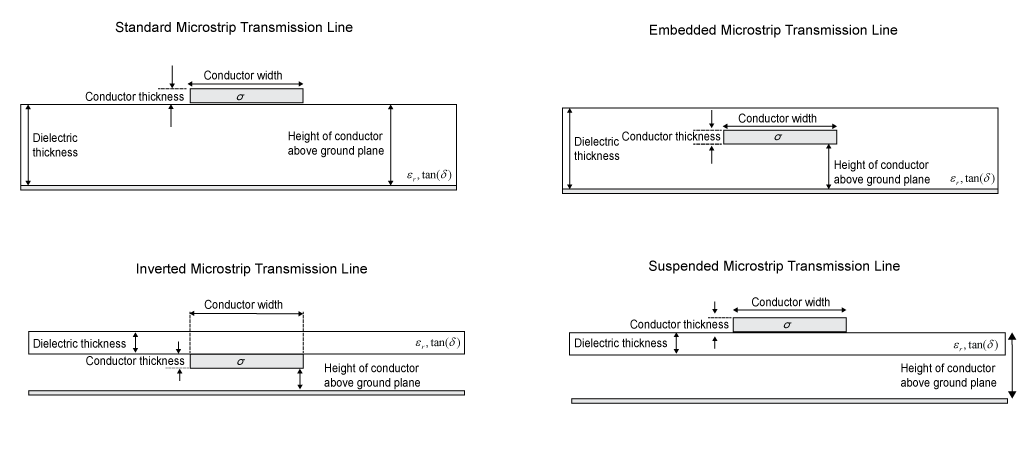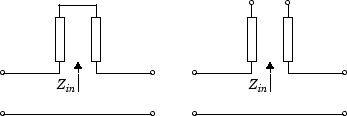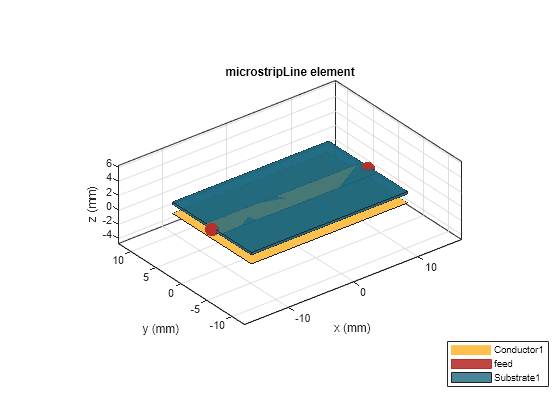txlineMicrostrip
Create microstrip transmission line
Description
Use the txlineMicrostrip object to create a standard, embedded,
inverted, or suspended microstrip transmission line. This figure shows the cross sections of
the four types of microstrip transmission lines you can create using the
txlineMircostrip object. The physical characteristics of the microstrip
transmission line include the conductor width (w), the conductor thickness
(t), the dielectric thickness (d), the relative
permittivity constant (ε), and the height of the conductor above the ground
plane (h).

Creation
Description
txline = txlineMicrostrip
txline = txlineMicrostrip(Name,Value)txline =
txlineMicrostrip('Width',0.0046) creates a standard microstrip transmission
line with a width of 0.0046 meters.
Properties
Object Functions
sparameters | Calculate S-parameters for RF data, network, circuit, and matching network objects |
groupdelay | Group delay of S-parameter object or RF filter object or RF Toolbox circuit object |
noisefigure | Calculate noise figure of transmission lines, series RLC, and shunt RLC circuits |
getZ0 | Calculate characteristic impedance with and without dispersion for transmission line |
circuit | Circuit object |
clone | Create copy of existing circuit element or circuit object |
microstripLine (RF PCB Toolbox) | Create transmission line in microstrip form |
Examples
Algorithms
When you set the
StubModeproperty to'Shunt', the 2-port network consists of a stub transmission line that you can terminate with either a short circuit or an open circuit.
Zin is the input impedance of the shunt circuit. The ABCD-parameters for the shunt stub are calculated as:
When you set the
StubModeproperty to'Series', the 2-port network consists of a series transmission line that you can terminate with either a short circuit or an open circuit.
Zin is the input impedance of the series circuit. The ABCD-parameters for the series stub are calculated as:
References
[1] Garg, Ramesh, I. J. Bahl, and Maurizio Bozzi. Microstrip Lines and Slotlines. 3rd ed. Artech House Microwave Library. Boston: Artech House, 2013.
[2] Wadell, Brian C. Transmission Line Design Handbook. The Artech House Microwave Library. Boston: Artech House, 1991.
Version History
Introduced in R2020bSee Also
microstripLine (RF PCB Toolbox) | txlineCoaxial | txlineCPW | txlineParallelPlate | txlineRLCGLine | txlineTwoWire




